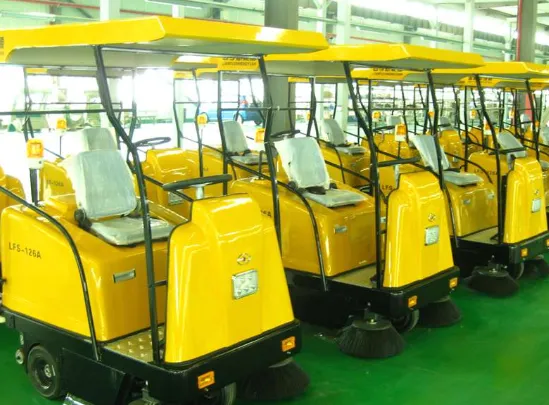
-
 Afrikaans
Afrikaans -
 Albanian
Albanian -
 Amharic
Amharic -
 Arabic
Arabic -
 Armenian
Armenian -
 Azerbaijani
Azerbaijani -
 Basque
Basque -
 Belarusian
Belarusian -
 Bengali
Bengali -
 Bosnian
Bosnian -
 Bulgarian
Bulgarian -
 Catalan
Catalan -
 Cebuano
Cebuano -
 China
China -
 China (Taiwan)
China (Taiwan) -
 Corsican
Corsican -
 Croatian
Croatian -
 Czech
Czech -
 Danish
Danish -
 Dutch
Dutch -
 English
English -
 Esperanto
Esperanto -
 Estonian
Estonian -
 Finnish
Finnish -
 French
French -
 Frisian
Frisian -
 Galician
Galician -
 Georgian
Georgian -
 German
German -
 Greek
Greek -
 Gujarati
Gujarati -
 Haitian Creole
Haitian Creole -
 hausa
hausa -
 hawaiian
hawaiian -
 Hebrew
Hebrew -
 Hindi
Hindi -
 Miao
Miao -
 Hungarian
Hungarian -
 Icelandic
Icelandic -
 igbo
igbo -
 Indonesian
Indonesian -
 irish
irish -
 Italian
Italian -
 Japanese
Japanese -
 Javanese
Javanese -
 Kannada
Kannada -
 kazakh
kazakh -
 Khmer
Khmer -
 Rwandese
Rwandese -
 Korean
Korean -
 Kurdish
Kurdish -
 Kyrgyz
Kyrgyz -
 Lao
Lao -
 Latin
Latin -
 Latvian
Latvian -
 Lithuanian
Lithuanian -
 Luxembourgish
Luxembourgish -
 Macedonian
Macedonian -
 Malgashi
Malgashi -
 Malay
Malay -
 Malayalam
Malayalam -
 Maltese
Maltese -
 Maori
Maori -
 Marathi
Marathi -
 Mongolian
Mongolian -
 Myanmar
Myanmar -
 Nepali
Nepali -
 Norwegian
Norwegian -
 Norwegian
Norwegian -
 Occitan
Occitan -
 Pashto
Pashto -
 Persian
Persian -
 Polish
Polish -
 Portuguese
Portuguese -
 Punjabi
Punjabi -
 Romanian
Romanian -
 Russian
Russian -
 Samoan
Samoan -
 Scottish Gaelic
Scottish Gaelic -
 Serbian
Serbian -
 Sesotho
Sesotho -
 Shona
Shona -
 Sindhi
Sindhi -
 Sinhala
Sinhala -
 Slovak
Slovak -
 Slovenian
Slovenian -
 Somali
Somali -
 Spanish
Spanish -
 Sundanese
Sundanese -
 Swahili
Swahili -
 Swedish
Swedish -
 Tagalog
Tagalog -
 Tajik
Tajik -
 Tamil
Tamil -
 Tatar
Tatar -
 Telugu
Telugu -
 Thai
Thai -
 Turkish
Turkish -
 Turkmen
Turkmen -
 Ukrainian
Ukrainian -
 Urdu
Urdu -
 Uighur
Uighur -
 Uzbek
Uzbek -
 Vietnamese
Vietnamese -
 Welsh
Welsh -
 Bantu
Bantu -
 Yiddish
Yiddish -
 Yoruba
Yoruba -
 Zulu
Zulu
Feb . 06, 2025 05:27
Back to list
Gratings & Covers
FRP (Fiberglass Reinforced Plastic) valves have emerged as a preferred choice in various industries owing to their unique blend of durability, corrosion resistance, and lightweight properties. These characteristics make them indispensable in sectors such as chemical processing, oil and gas, and water treatment. The journey of an FRP valve from production to application unveils its profound influence on modern industrial operations, highlighting its pivotal role in maintaining operational efficiency and environmental sustainability.
From a sustainability perspective, FRP valves champion environmentally conscious engineering. The longevity and reduced maintenance demands of FRP valves translate to minimal environmental disturbance. By decreasing the need for constant replacements and the associated waste generation, industries employing FRP valves contribute positively to ecological conservation efforts. Furthermore, the energy efficiency gained through the use of FRP valves aligns with broader global initiatives focused on reducing carbon footprints and promoting sustainable practices. Innovation within the FRP valve market remains robust, driven by continuous advancements in polymer chemistry and fabrication techniques. These technological strides have led to the development of FRP valves with enhanced features such as improved resistance to extreme temperatures and pressures and advanced sealing mechanisms that mitigate leakage risks. As industries continue to leverage these advancements, the performance spectrum of FRP valves broadens, setting new benchmarks for reliability and operational excellence. Certifications and compliance also highlight the authoritative stance of FRP valves in industrial use. Recognized standards such as ISO and ASTM certifications provide a framework of trust, ensuring that FRP valves meet stringent quality and performance metrics. Companies incorporating certified FRP valves can operate with the assurance that their systems are supported by components that uphold industry-leading standards. In conclusion, the adoption of FRP valves signifies a strategic shift towards embracing cutting-edge materials science in pursuit of operational superiority and environmental stewardship. Their amalgamation of durability, efficiency, and sustainability underscores their integral role in modern industrial practices. For businesses evaluating valve options, the consideration of FRP valves is not merely about adopting a product but engaging with a material that embodies ingenuity, reliability, and forward-thinking engineering.


From a sustainability perspective, FRP valves champion environmentally conscious engineering. The longevity and reduced maintenance demands of FRP valves translate to minimal environmental disturbance. By decreasing the need for constant replacements and the associated waste generation, industries employing FRP valves contribute positively to ecological conservation efforts. Furthermore, the energy efficiency gained through the use of FRP valves aligns with broader global initiatives focused on reducing carbon footprints and promoting sustainable practices. Innovation within the FRP valve market remains robust, driven by continuous advancements in polymer chemistry and fabrication techniques. These technological strides have led to the development of FRP valves with enhanced features such as improved resistance to extreme temperatures and pressures and advanced sealing mechanisms that mitigate leakage risks. As industries continue to leverage these advancements, the performance spectrum of FRP valves broadens, setting new benchmarks for reliability and operational excellence. Certifications and compliance also highlight the authoritative stance of FRP valves in industrial use. Recognized standards such as ISO and ASTM certifications provide a framework of trust, ensuring that FRP valves meet stringent quality and performance metrics. Companies incorporating certified FRP valves can operate with the assurance that their systems are supported by components that uphold industry-leading standards. In conclusion, the adoption of FRP valves signifies a strategic shift towards embracing cutting-edge materials science in pursuit of operational superiority and environmental stewardship. Their amalgamation of durability, efficiency, and sustainability underscores their integral role in modern industrial practices. For businesses evaluating valve options, the consideration of FRP valves is not merely about adopting a product but engaging with a material that embodies ingenuity, reliability, and forward-thinking engineering.
Next:
Related Products









